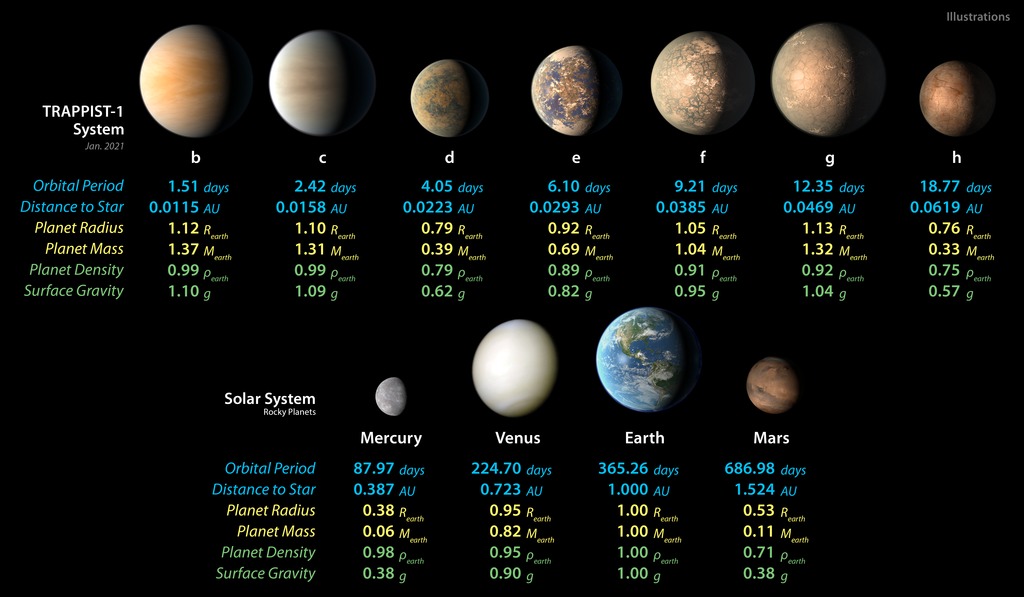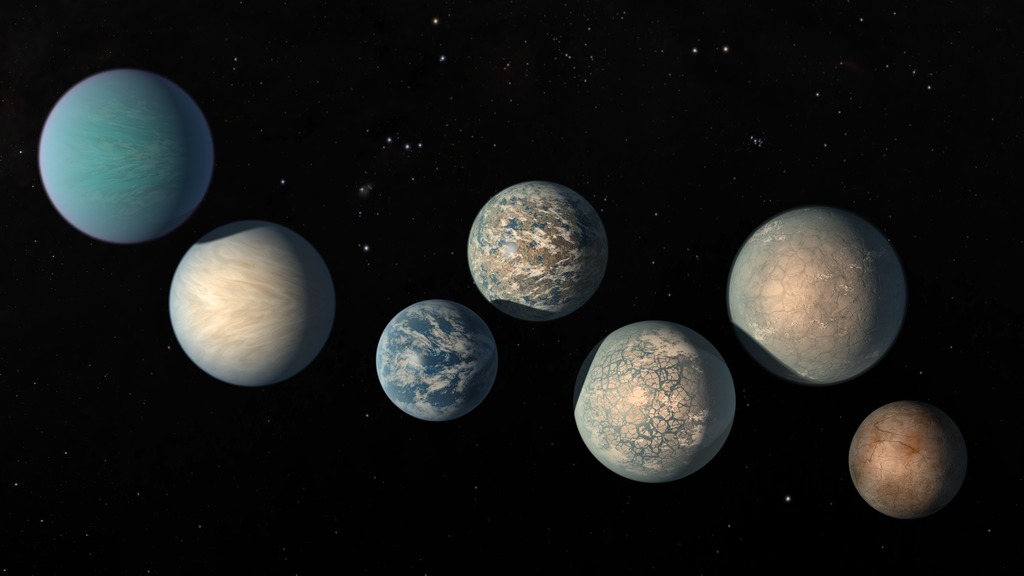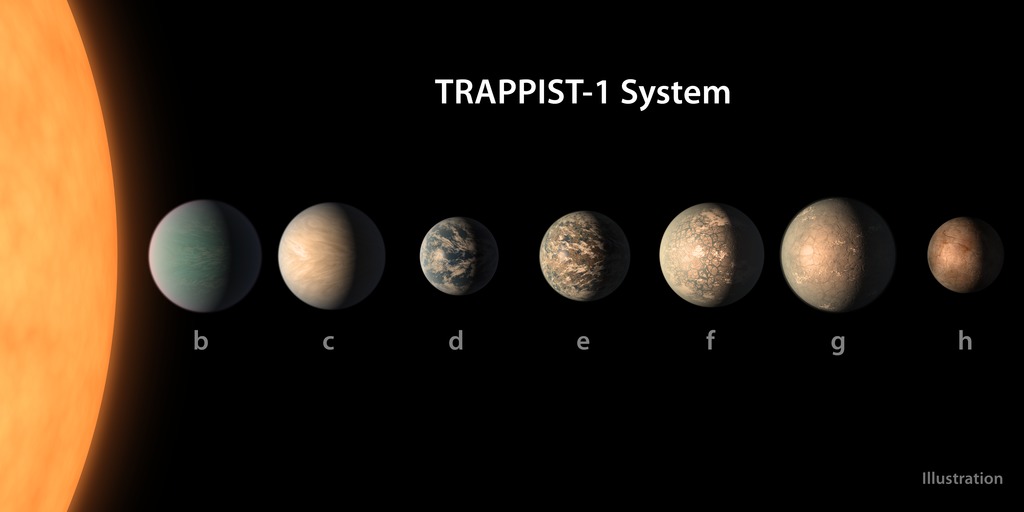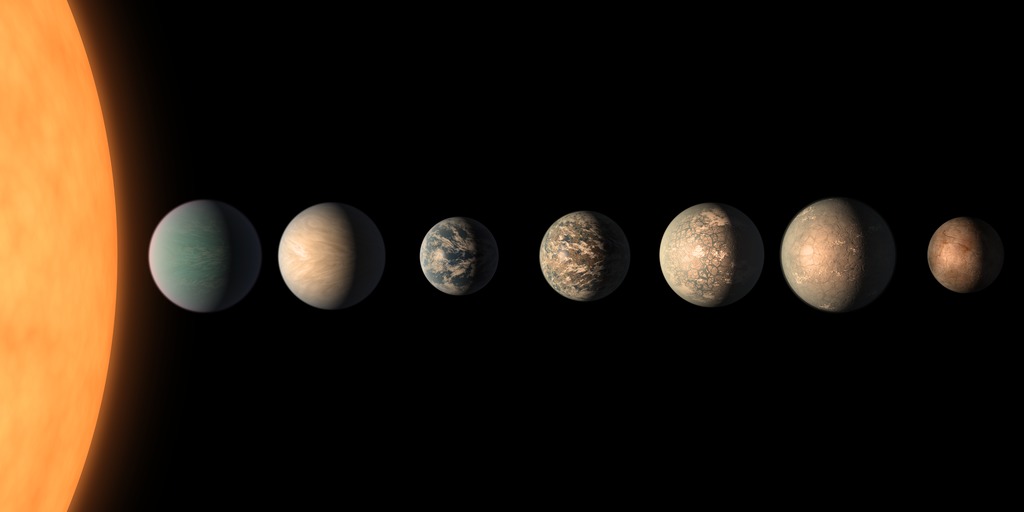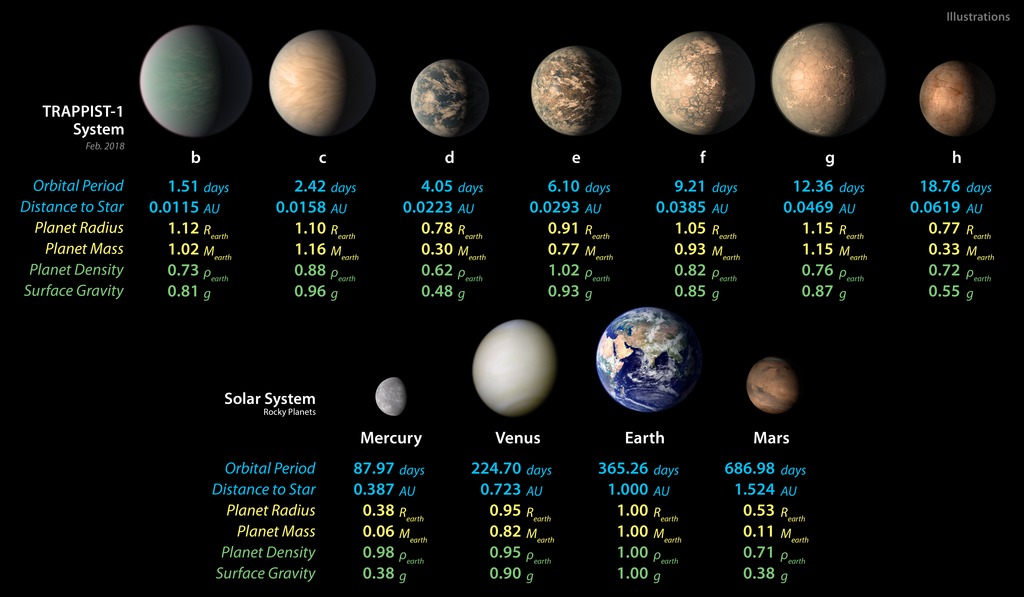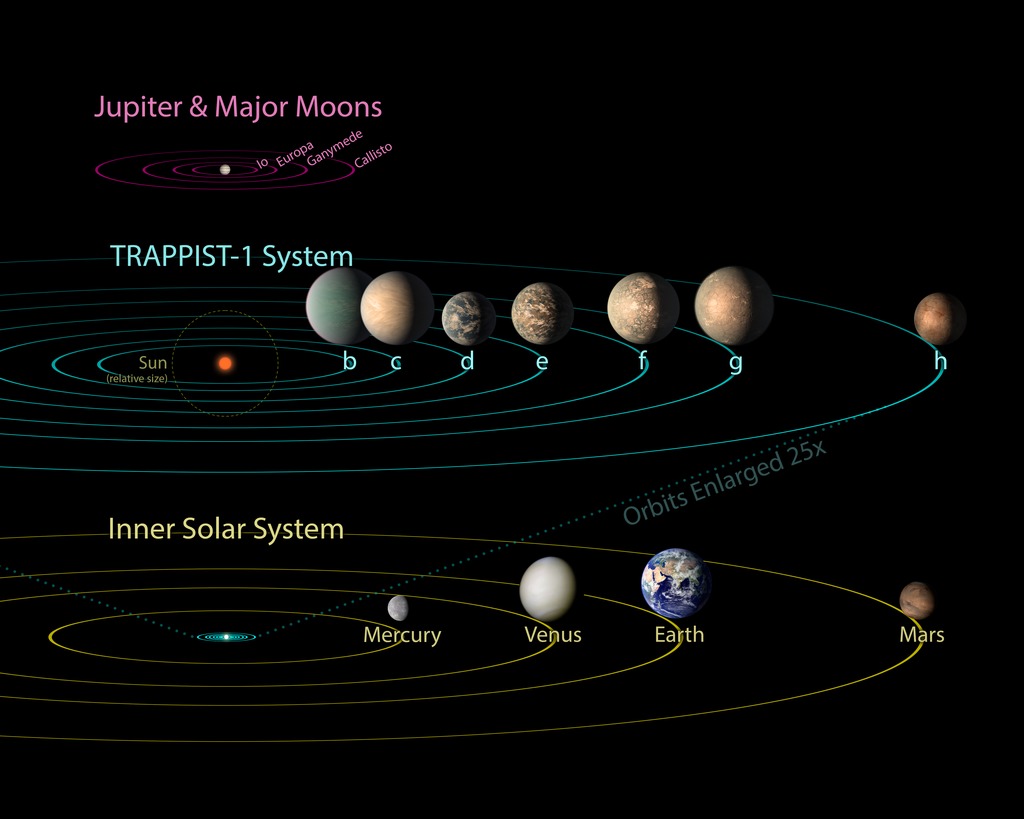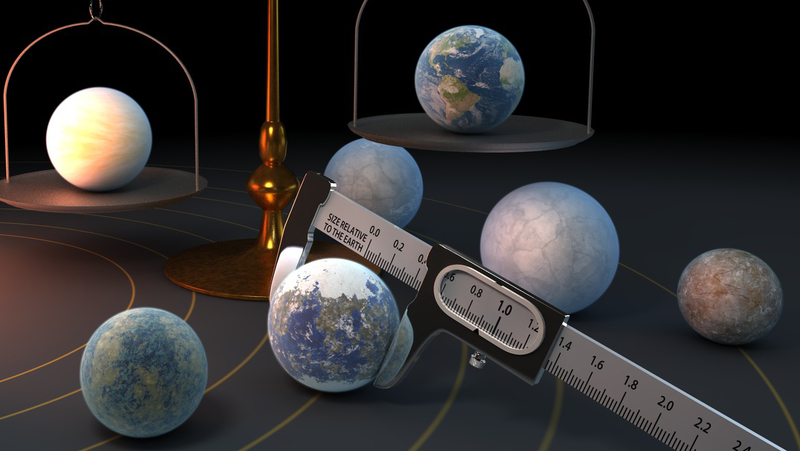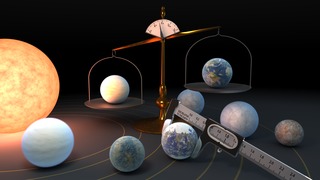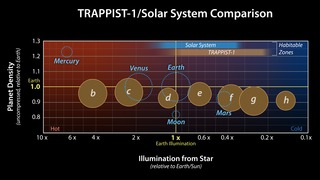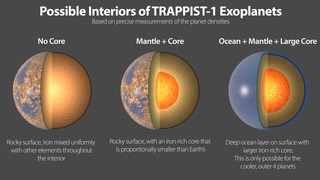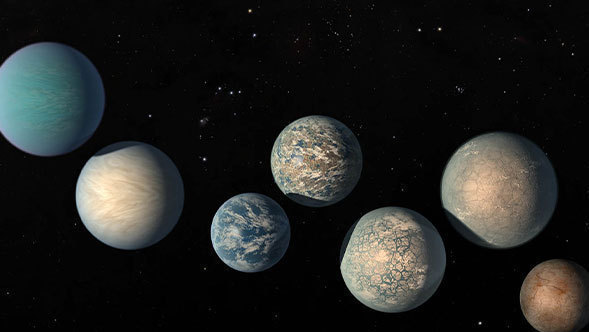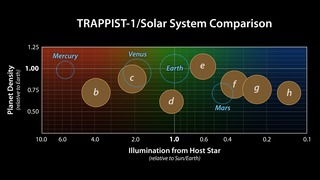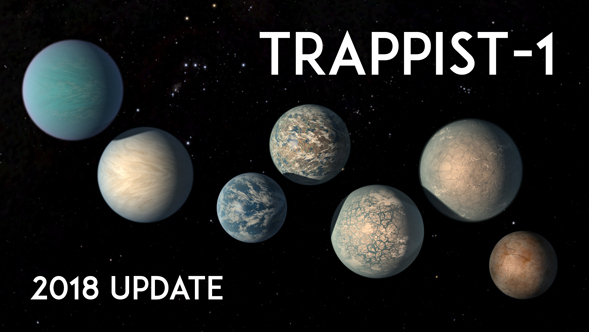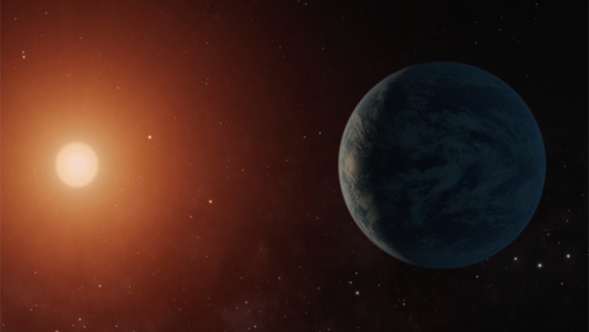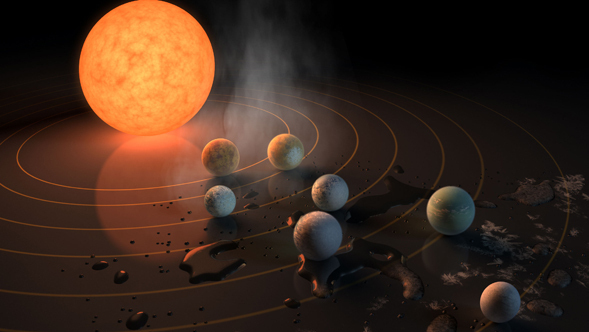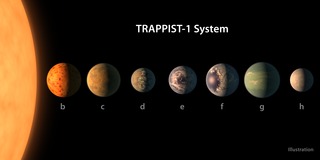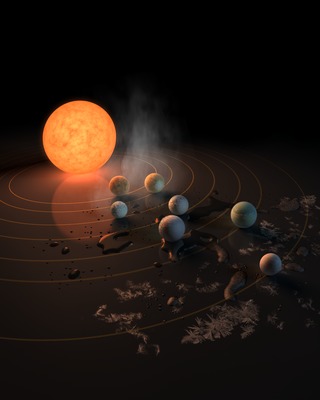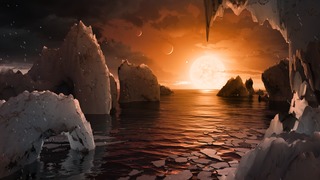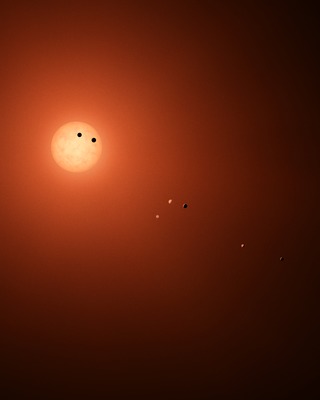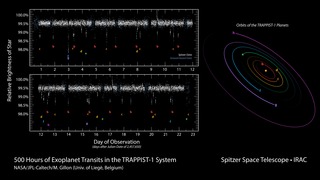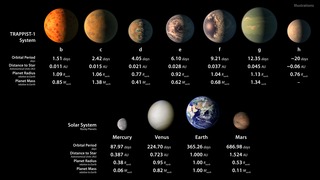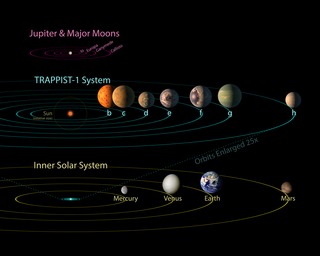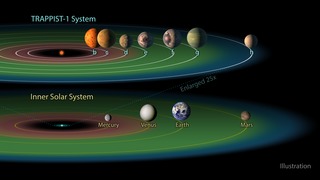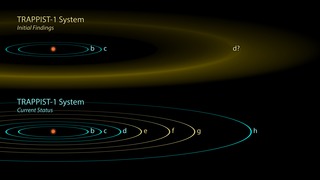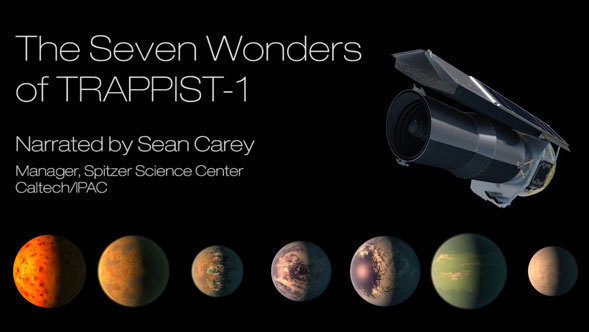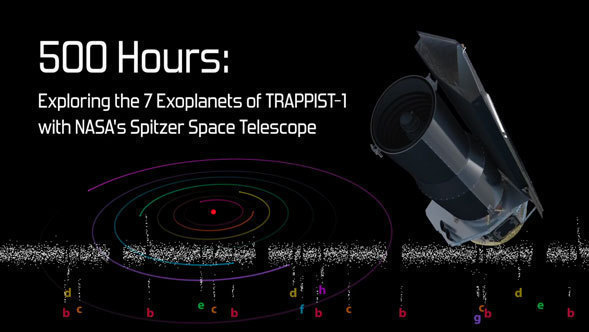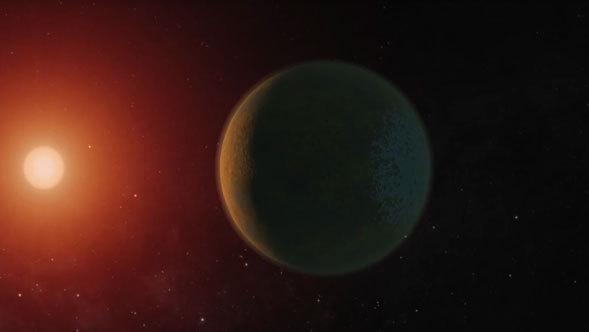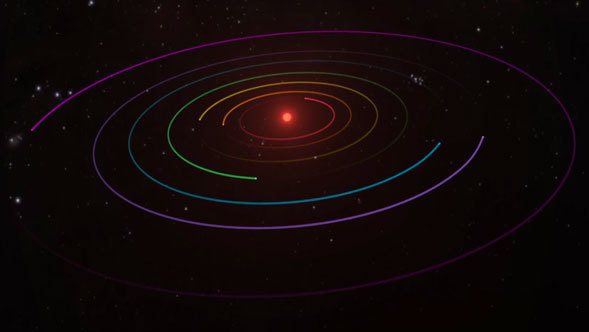The red dwarf star TRAPPIST-1 is home to the largest group of roughly Earth-size planets ever found in a single stellar system. Located about 40 light-years away, these seven rocky siblings provide an example of the tremendous variety of planetary systems that likely fill the universe.
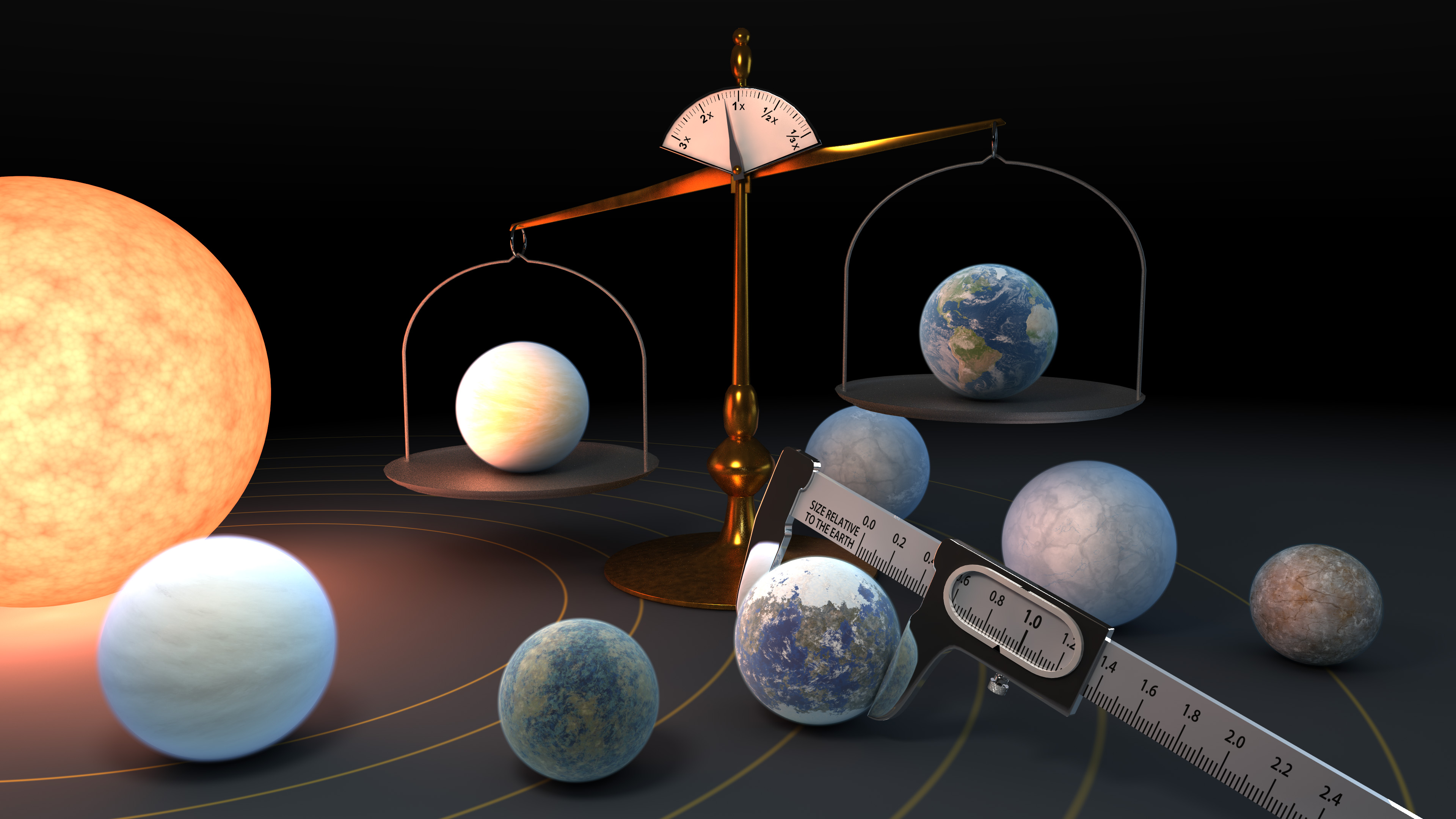
The 7 Earth-sized Planets of TRAPPIST-1
Release 3 • January 22nd, 2021
The 7 Rocky TRAPPIST-1 Planets May Be Made of Similar Stuff
A new study published today in the Planetary Science Journal shows that the TRAPPIST-1 planets have remarkably similar densities. That could mean they all contain about the same ratio of materials thought to compose most rocky planets, like iron, oxygen, magnesium, and silicon. But if this is the case, that ratio must be notably different than Earth’s: The TRAPPIST-1 planets are about 8% less dense than they would be if they had the same makeup as our home planet. Based on that conclusion, the paper authors hypothesized a few different mixtures of ingredients could give the TRAPPIST-1 planets the measured density.
Images
Release 2 • February 5th, 2018
New Clues to TRAPPIST-1 Planet Compositions, Atmospheres
In the year since NASA announced the seven Earth-sized planets of the TRAPPIST-1 system, scientists have been working hard to better understand these enticing worlds just 40 light-years away. Thanks to data from a combination of space- and ground-based telescopes, we know more about TRAPPIST-1 than any other planetary system besides our solar system.
Images
Videos
Release 1 • February 22nd, 2017
NASA Telescope Reveals Largest Batch of Earth-Size, Habitable-Zone Planets Around Single Star
NASA's Spitzer Space Telescope has revealed the first known system of seven Earth-size planets around a single star. Three of these planets are firmly located in the habitable zone, the area around the parent star where a rocky planet is most likely to have liquid water.



